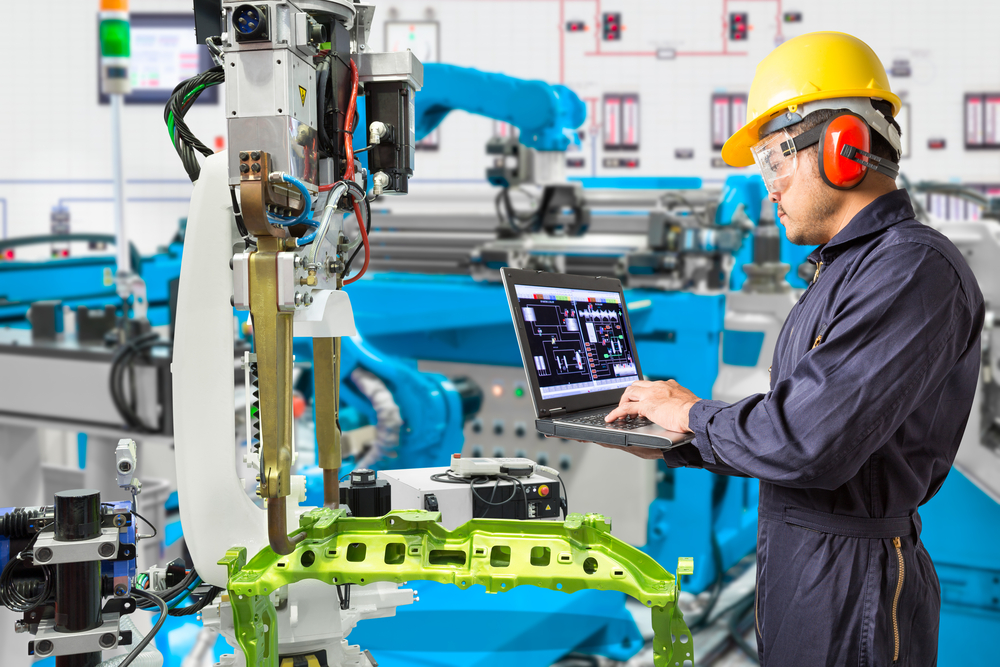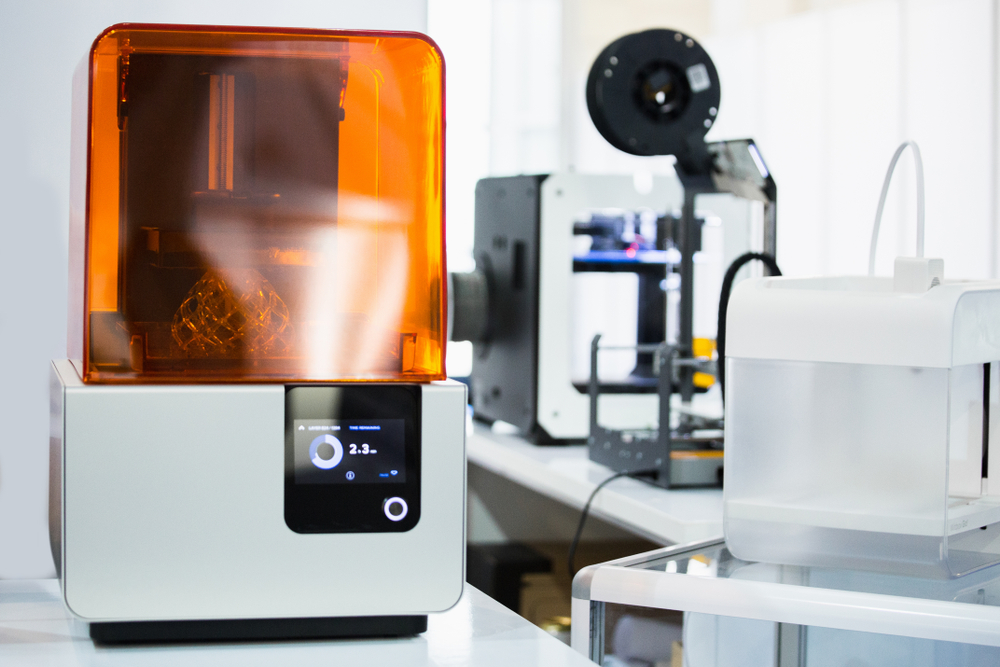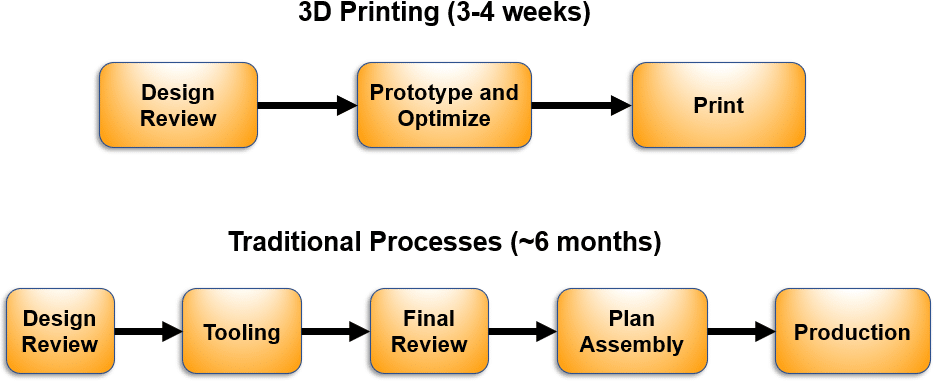The idea of a smart factory, where machines manufacture products with little to no human intervention, promises greater throughput and efficiency and less maintenance. Even the most advanced companies have not made their operations fully autonomous, However, advancements in manufacturing, such as 3D printing and automation technology, are closing the gap in making completely automated smart factories a reality.
With flexibility and a high level of automation, 3D printing helps manufacturers accelerate new product introduction (NPI) and full-scale production. Commercialization of 3D printing systems in smart factories has also brought costs down, allowing more companies to take advantage of additive manufacturing services. When deciding how to scale up manufacturing of new or existing products, partnering with a smart factory leveraging 3D printing allows greater flexibility in manufacturing capacity, while accelerating production ramp-up and supporting a high mix-low volume suite of products.

Why Outsource to a Smart Factory for 3D Printing?
With greater global uncertainty, trade wars, and supply chain challenges, many companies are looking for new ways to increase manufacturing agility and reduce risk. Manufacturing with a 3D printing smart factory provides many benefits:
- Reduce capital expenditures. In contrast to traditional manufacturing processes like injection molding, 3D printing does not require tooling – reducing upfront costs and production lead time. It also allows contract manufacturers to lower the minimum order quantity (MOQ) requirement for new products and keep per-unit costs competitive.
- Enable cost-effective low volume production. 3D printing smart factories enable companies to meet low volume requirements, or test the market before scaling up to high volume production with traditional processes. After a design passes a 3D printability assessment, it can be put into production in the smart factory at low volume or on-demand
- Augment manufacturing capacity. 3D printing smart factories can support on-demand production of a broad range of products, enabling additional manufacturing capacity . Companies can satisfy customer demand for smaller orders without holding excess inventory.
- Easily increase SKU count for a product. Supporting a broad range of designs, 3D printing allows a single order to be split among multiple SKUs for the same product. Companies can quickly test the market with SKUs of different colors or sizes, or slight design variations with marginal additional cost.
- Flexibility to scale. 3D printing allows companies to easily scale production up or down. Enabling printing on-demand, companies can meet customer manufacturing orders without holding high inventory.
- Accelerate design to production. With the elimination of tooling, a design can get to production faster with a 3D printing smart factory than traditional manufacturing sites. Companies can quickly get to market, while they work in parallel to scale up high volume manufacturing with traditional processes.
- Reduce supply chain risk. Companies have more options to build out supply chains with 3D printing smart factories. Outsourcing to a smart factory eliminates the risk of owning and operating a manufacturing site. Additionally, manufacturing sites also reduce their risk, as they are more diversified with the ability to support multiple products and clients.

How to Scale Up Manufacturing with a Contract Smart Factory
With 3D printing smart factories, getting new or existing designs into production is a much faster process than working with traditional contract manufacturers. Designs go through a 3D printability assessment to ensure feasibility and then are directly sent to a smart factory for production. Similar to traditional manufacturing processes, designs are adapted to maximize yield. However, 3D printing typically has fewer design constraints and greater flexibility, potentially producing a superior final product.
During redesign for 3D printing, manufacturers can optimize the design – assessing whether parts can be consolidated, mechanical supports are needed, and if the final product meets form, fit, and function. Optimizing the design for the function, minimizes assembly, material waste during printing, and post-processing steps. Designs may go through prototyping to ensure the product can be produced at scale, performs as expected, or meets finishing requirements. After optimizing the design, the product can be 3D printed.
In contrast with traditional manufacturing, tooling needs to be created and tested, and designs often go through additional rounds of review and optimization just to finalize tooling. With 3D printing, transitioning from design to manufacturing may only take weeks, compared to six months to a year with traditional manufacturing methods such as injection molding.

To minimize capital risk from building a facility or updating tooling for traditional processes, companies can outsource production to a 3D printing smart factory. Whether in development or the production process, 3D printing partners can help companies accelerate design to manufacturing, and allow companies to easily scale as business demands or needs grow.
If you need solutions for how to scale up manufacturing, LuxCreo provides access to advanced 3D printing smart factories, and can help qualify your design before you begin production in the smart factory. You can even support multiple SKUs in a single order to test the market with several product variations. 3D printing in a smart factory reduces risk, cost, and cycle times for low and high volume production.
To learn more about our processes and services for 3D printing at scale, visit our contact page or call (650) 336-0888.
